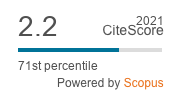Economic and Social Conditions and Concepts of Development in the Northeast Region.
Abstract
The Northeast region is the biggest and the poorest region of the country. The most backwardness of this region is due to poor socioeconomic conditions, traditional belief and culture, and land tenure of the population. Alternatives for development of this region, especially, in the direction of “Green Isan” should follow social science technique of rural development. Farm soil should be treated with manure and compost more than using chemical fertilizer. Water resources should be developed from the existing natural water resources in the region. Labour used in all development programs should be kept for “Isan man” only. Farm capital should be promoted from formal money institutions instead of private money lenders. Quality of rural education should be improved to the extent that pupils could learn how to grow crops and trees in their villages. School teachers in all primary schools should be good behavioral model for pupils. Rural health development program including eating food habit and drinking water of the villagers should be effectively improved. Rural industry should also be developed from the village cottage industry in order that out-migration of the rural population in this region would be decreased annually. These alternatives may be planned and launched together in the upper, middle, and lower Isan areas, with most benefits of the development programs really fall into the hands of the poor people of the region.
Downloads
Published
How to Cite
Issue
Section
License
This is an open access article under the CC BY-NC-ND license http://creativecommons.org/licenses/by-nc-nd/4.0/









